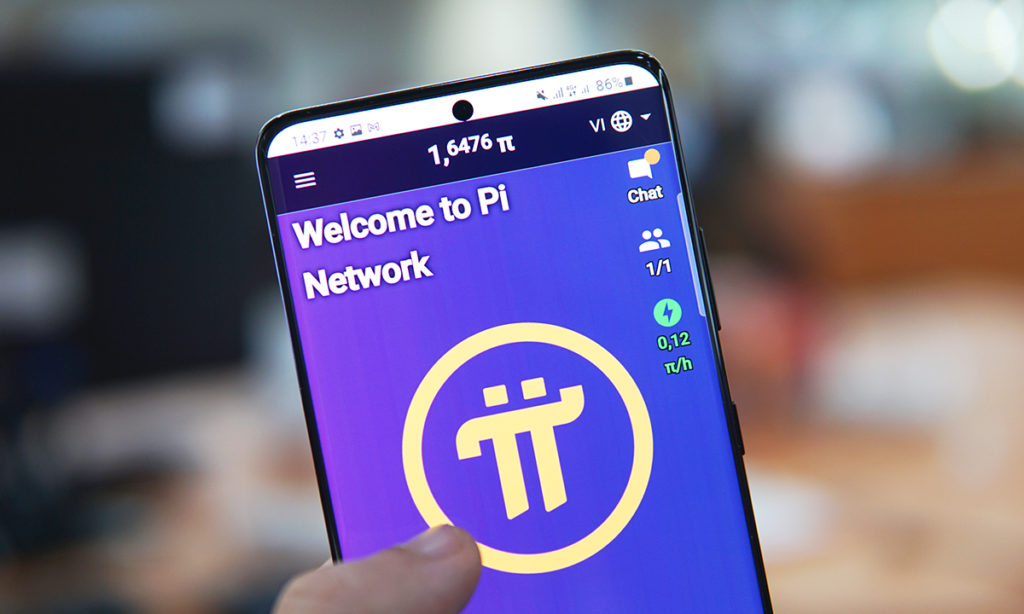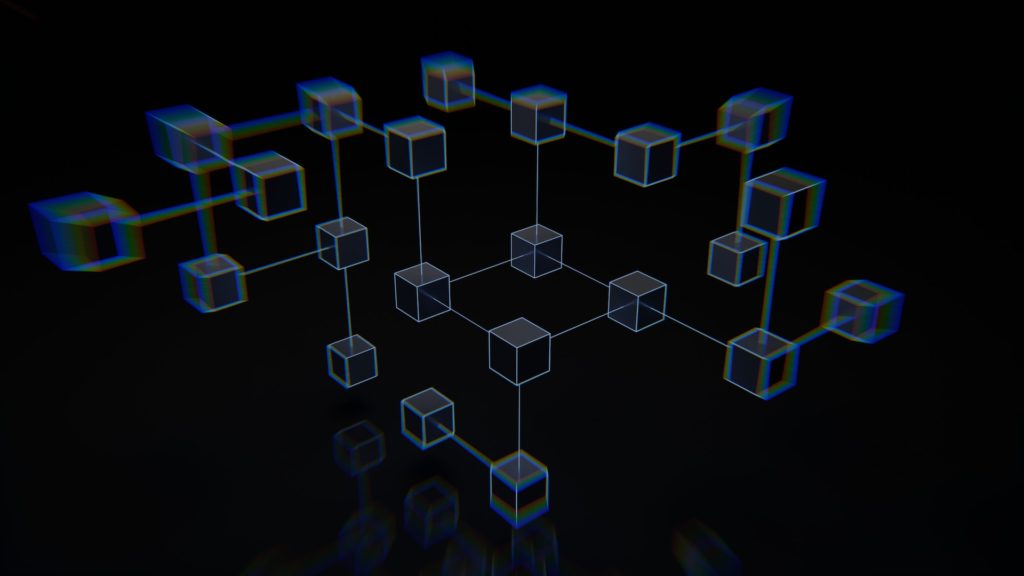Table of Contents
Pi crypto was created in 2018 by Nicolas Kokkalis and Chengdiao Fan as an attempt to simplify cryptocurrency accessibility and introduce more people to cryptocurrency through a simple crypto mining and management system.
At the time of its launch, the most appealing feature of the Pi cryptocurrency was its mobile mining feature. Users can mine Pi coins on their mobile devices by using the Pi mobile application. The mining program was only open to those who were invited.

The Pi mobile application is available for both Android and iOS devices. Users can mine Pi coins on their devices with a single click after installing and configuring the application. Pioneers are people who are part of the Pi network. Since its inception, the Pi network has amassed a sizable social media following and experienced rapid growth in participation, with a reported 33 million members as of 2022.
Participants in the network can take on a variety of roles, such as running a node on their personal computers, referring new members, or mining Pi coins on their mobile devices. Pi coins are awarded for these roles.
How Pi Network Works

The mobile application, which is currently in the Beta stage of the project, acts as a simulation of the mining system that will be properly launched once the mainnet is fully functional. Users of the mobile application take part in the validation of blocks and are rewarded in Pi cryptocurrency for their efforts.
Miners on the mobile app will connect to one or more nodes when they are actively mining. Mobile miners will check to see if the transaction has been recorded on the ledger whenever they are connected to the network. They also obtain the number of the most recent block and the hash value associated with that block.
The mobile miners and the node owners both receive rewards for their contributions to the mining of the block.
Consensus Algorithm
Stellar Consensus is the protocol that is used by the Pi network (SCP). David Mazières, the Chief Scientist at the Stellar Development Foundation, is the one responsible for the creation of SCP for the Stellar blockchain. It does this through the utilization of a novel mechanism known as Federated Byzantine Agreements, which ensures that any changes made to a distributed ledger are reliable and accurate.

The SCP protocol makes use of a legitimate voting mechanism. The nodes that make up the network cast votes to determine the legitimacy of a block and the block that will be mined after it. When the majority of the network’s nodes concur that a block should be mined next and verify the block’s validity, only then is the block considered mined.
The individual who designed this system is the one responsible for selecting the nodes that will take part in reaching this consensus. The SCP is good for the environment and uses very little energy, but it has been criticized for being too centralized.
Tokenomics and Reward System
The Pi network’s very own cryptocurrency is called Pi coin. Mining is the process by which users on the Pi network can earn Pi coins. Those who hold Pi coins can use them to pay transaction fees and also conduct transactions on applications and marketplaces that have been built using the Pi ecosystem. The supply of Pi coins is entirely determined by the activities that take place on the network and is only given out in the form of user rewards.
Although there was not an official pre-mine, users who took part in the beta mining program and have their tokens can now port them over to the mainnet. It does not have a predetermined maximum supply, in contrast to many other cryptocurrencies.
Each user that joins the Pi network (by creating a Pi account) is given a certain number of Pi coins according to a predetermined formula. This allotted amount will be mined out over the course of time. In other words, the user has a finite amount of time in which they can mine the tokens that have been allotted to them. This allocation is only given out to the first one hundred million users that sign up for the Pi network. Users who bring in new participants for the Pi cryptocurrency project are eligible for rewards under the project’s referral program.
The protocol for mining Pi coins results in the creation of an additional Pi coin for each coin that is created as a reward for a member or referral. This additional coin will be held in reserve for use in the network’s compensation system for developers. The sum of the member reward, the reward for referrals, and the reward for developers makes up the total supply of Pi coins.
Governance Model
The governance model used by Pi network is referred to as a “Semi-DAO.” In contrast to the well-known decentralized governance system, the Pi network utilizes a governance system that places a centralized team in charge while simultaneously empowering the community to play a significant role in the decision-making process regarding the project.

The governance model system is variable; it is a two-phase plan that adjusts according to the number of users who are actively connected to the network.
If there are fewer than five million people actively using the Pi network, the team will directly ask members of the general community for feedback on the various proposal ideas. The project team initiates conversations with the community by using the forum that was constructed for the project on the mobile mining application as well as other engagement media.
Before making a final decision, it is important to take into account the opinions of the rest of the community. The ultimate decision regarding the next step is made by the group. The second phase of the governance system is implemented once the community has more than five million active participants and is continuing to grow rapidly. The group establishes a committee and invites well-known contributors from the community to serve on it.
The Committee is responsible for coming up with ideas and organizing the various contributions from the community. The forum for the Pi network is still accepting contributions from members of the community. The committee will now move forward to make a final decision using the contributions made by the members of the community.
Testnet and Mainnet System

Pi Network was initially conceived as a research endeavor, and in 2018 it began operating in the Beta phase of its development. About two years later, when the Testnet was finally launched, developers on the Pi network were finally able to put certain features through their paces before they were finally implemented on the mainnet.
The Pi network finally introduced its mainnet in the fourth quarter of 2021, after much delay and anticipation. Pioneers will be able to create a proper wallet, port their mined Pi cryptocurrency to their wallet, and engage in peer-to-peer transactions thanks to the mainnet, which provides a platform for pioneers to do so.
The migration to the mainnet includes a know-your-customer (KYC) verification process as well as a list of tasks that users must complete in order to be eligible to own and operate an appropriate wallet.
Is Pi Network a Scam?

If you have even the tiniest bit of curiosity about the Pi cryptocurrency, you should know that there is a good chance that your curiosity will be squelched when you hear statements about the value of Pi coins and the credibility of the project.
Despite the fact that Pi crypto applications do not require any additional installation costs and are relatively simple to run, statements claiming that they are a scam were and still are very popular. The primary reason for this is the delay that occurred on the mainnet as well as the listing of the Pi cryptocurrency on exchanges.
Because users are unable to move the Pi coins they have mined and because mobile mining is generally considered to be unreliable, the Pi network has been labeled as a “high-level” marketing scheme, and many people believe that it will eventually turn out to be a scam. These assertions have become even more resonant as the Pi network community has continued to expand despite the fact that the mined cryptocurrencies have not yet been produced.
The Pi crypto team is demonstrating that this is not the case with recent developments. It is now possible for users to spend their Pi cryptocurrency as a result of the launch of the mainnet, and it is rumored that a number of marketplaces will accept payments in Pi coins.
According to recent reports, The PiChain International is currently being developed to facilitate the opening of new stores by business owners who are willing to accept Pi coins as payment. According to recent posts on social media, the online marketplace is undergoing active development and is drawing ever closer to its debut.
Regardless of this, mandatory KYC is still a hot topic in the public discourse, and the project has been accused of having an excessive amount of centralized control.
What is the Value of Pi Network?

To the best of our knowledge, the Pi cryptocurrency has not yet been listed on any cryptocurrency exchange (Distinguish the original Pi cryptocurrency from the other fake Pi tokens minted on other blockchains). However, there have been reports of peers engaging in trading activities. [Citation needed] Since it is now possible to transfer the coins that have been mined, a number of analysts have made forecasts regarding the value of Pi coins.
The community of users who make up the Pi network have also made a number of forecasts and price estimates for the Pi cryptocurrency. According to projections made by Digital Coin Price, the price of Pi coin will hover around $0.007 by the end of 2022. The Pi community typically suggests even more substantial prices for the Pi coins.
These are nothing more than wild guesses, and the real value of the Pi network won’t emerge until after it has been listed on an exchange and trading activity has been restarted. It is possible that the actual value will be significantly different from these speculations. When working with these speculations, investors should make it a priority to conduct their own independent research.
Final Thoughts
The authenticity of the Pi cryptocurrency is still up in the air, as is the question of whether or not it will have any value. In spite of the plausible technological advancements that have been made and the enormous community that the project has been able to build over the course of the past four years, and the reputation of Pi is still in question.
In light of the stringent computational protocols that are a part of cryptocurrency mining, the Pi network offers an incredibly simple method of earning cryptocurrency. As a result, it has received a positive response from crypto enthusiasts who like the idea of earning cryptocurrency with a minimum amount of effort.
The majority of members of the cryptocurrency community are still dubious about the intentions of the project because they are uncertain about the legitimacy of the process and the value of the Pi network. These sentiments haven’t changed all that much, despite the fact that the mainnet has been launched and there have been some significant developments and adoptions happening in the Pi community.
In addition to the possibility of listing on exchanges, members of the Pi cryptocurrency community are hard at work developing means to use the Pi coin for direct purchases of commodities and other peer-to-peer exchange facilities. Investors are urged to exercise extreme caution before participating in any cryptocurrency venture, including this one. Pi coin is not an exception to the rule that cryptocurrencies, in general, are high-risk investments.
Disclaimer: The opinion expressed here is not investment advice – it is provided for informational purposes only. It does not necessarily reflect the opinion of EGG Finance. Every investment and all trading involves risk, so you should always perform your own research prior to making decisions. We do not recommend investing money you cannot afford to lose.
 English
English Français
Français Español
Español Bahasa Indonesia
Bahasa Indonesia 中文 (中国)
中文 (中国) Русский
Русский Português
Português Deutsch
Deutsch

